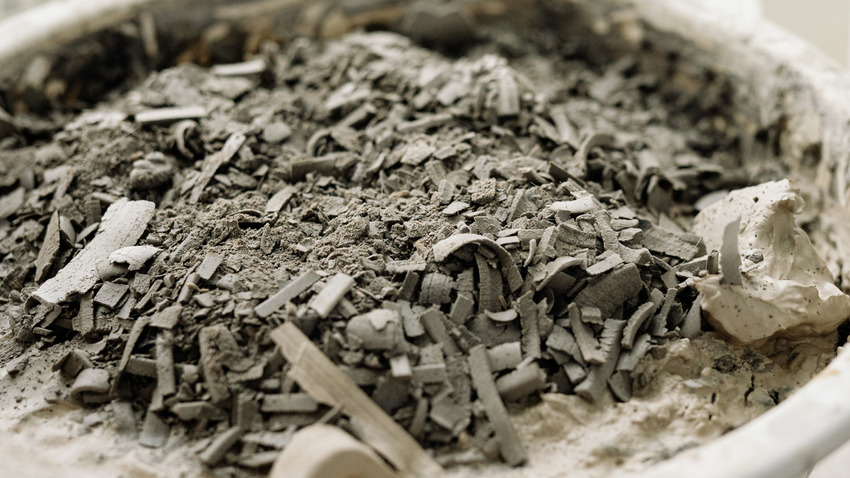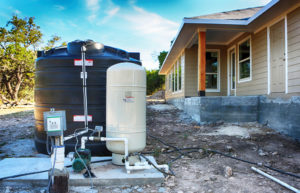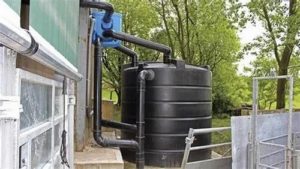Wood ash, a byproduct of wood combustion, can be a valuable resource for naturally filtering water.
When added to water, the residual lime and potassium carbonate in the wood ash react with the water to create an alkaline environment that helps to remove impurities and contaminants.
This natural filtration method is both cost-effective and eco-friendly, making it a desirable alternative to traditional water treatment methods.
Collect and store the wood ash
Collect wood ash from your fireplace, wood stove, or campfire. Allow the ash to cool and then store it in a clean, airtight container.
When wood is burned, it releases minerals and nutrients into the ash.
These nutrients include potassium, calcium, magnesium, and more, which are all essential for plant growth.
To ensure that the ash is effective as a fertilizer, it’s important to collect it as soon as possible after the fire has burned out, while the ash is still cool and not yet converted to lime.
Store the ash in a clean, airtight container, such as a plastic bucket or bag, to prevent contamination and moisture from entering the ash.
This will help to preserve the nutrients and ensure that they remain available for your plants.
By collecting and storing wood ash, you can create a natural and sustainable fertilizer for your garden, promoting healthy plant growth and development.
Test the pH level
Before using the wood ash as a filtration agent, test the pH level to ensure it is not too alkaline. Wood ash can have a high pH level, which can be harmful to plants and aquatic life.
Testing the pH level before using wood ash as a filtration agent is important to ensure the safety of plants and aquatic life.
Wood ash can have a high pH level, typically ranging between 8 and 10, which can be detrimental to the health of these living organisms.
An excessively alkaline environment can cause damage to the leaves and stems of plants, while also disrupting the delicate balance of aquatic ecosystems.
To mitigate these risks, it is essential to test the pH level of the wood ash before applying it as a filtration agent.
This can be done using a pH test kit, which can help determine the appropriate amount of ash needed to achieve the desired pH level.
By taking this precaution, you can ensure the safety of plants and aquatic life while still benefiting from the effective filtration properties of wood ash.
Neutralize the ash
If the pH level is too high, neutralize the ash by mixing it with water to create a solution. This will help reduce the risk of contamination.
To neutralize the ash and reduce the risk of contamination, it is essential to mix the ash with water to create a solution.
This process helps to lower the pH level of the ash, which can be too high due to the high alkalinity of the burnt materials.
By diluting the ash with water, we can create a solution that is safer to handle and less likely to cause contamination.
This solution can be used to clean surfaces and equipment, further reducing the risk of contamination.
It is important to note that when neutralizing the ash, it is important to use clean water to avoid introducing any additional contaminants into the solution.
Proper neutralization of the ash will not only improve the safety of the ash but also help to prevent the growth of harmful microorganisms, ensuring a more successful and safe ash management process.
Use the ash as a filter
To use the wood ash as a filtration agent, simply place a layer of the ash in a container or bag and pour the water to be filtered over the ash. The ash will capture impurities and pollutants, leaving clean water behind.
Using wood ash as a filtration agent is an effective and cost-efficient way to purify water.
Simply place a layer of the ash in a container or bag, and pour the water to be filtered over the ash.
The ash will capture impurities and pollutants, such as sediments, bacteria, and viruses, through a process called adsorption.
Adsorption is a chemical reaction where particles or molecules are attracted and held onto the surface of the ash, effectively removing them from the water.
As the water passes through the ash, it will become cleaner and purer, leaving behind any impurities and contaminants.
The ash acts as a natural barrier, trapping any harmful substances and preventing them from passing through to the water.
This makes it an excellent option for water filtration in remote or off-grid areas where access to modern filtration systems may be limited.
The ash can be easily collected and reused multiple times, making it a sustainable and eco-friendly option for water purification.
Overall, using wood ash as a filtration agent is a simple yet effective solution for providing clean drinking water.
Charcoal and wood ash filters
You can also create a more effective filtration system by combining charcoal and wood ash. The charcoal will absorb impurities, while the wood ash will capture heavy metals and other contaminants.
Combining charcoal and wood ash filters can create a highly effective filtration system for removing impurities from water.
The activated charcoal will adsorb impurities and contaminants, including organic compounds, bacteria, and viruses, while the wood ash will capture heavy metals and other pollutants.
The wood ash, which is rich in potassium carbonate, will neutralize acidic compounds and help to further remove impurities.
This combination of filters can provide a comprehensive solution for cleaning water, making it safe for consumption.
By using these filters, you can rest assured that your water is free from harmful contaminants, providing a healthy and safe source of drinking water.
Aerobic and anaerobic filters
Wood ash can be used in both aerobic and anaerobic filters. Aerobic filters use oxygen to break down impurities, while anaerobic filters do not use oxygen and are better suited for removing organic compounds.
Wood ash can be effectively utilized in both aerobic and anaerobic filters to treat wastewater and improve its quality.
Aerobic filters use oxygen to break down impurities, leveraging the oxidative properties of wood ash to remove pollutants and contaminants.
The filters contain a biological mixture of microorganisms that thrive in an oxygen-rich environment, feeding on organic matter and converting it into harmless byproducts.
This process results in a high-quality effluent, free from harmful substances and odors.
Anaerobic filters, on the other hand, do not rely on oxygen and are better suited for removing organic compounds.
In these filters, microorganisms break down organic matter in the absence of oxygen, producing a byproduct that can be further treated and removed.
The wood ash acts as a carbon source, supporting the growth of these microorganisms and enhancing their ability to degrade organic matter.
The resulting effluent is enriched with nutrients and can be safely discharged into the environment.
The choice between aerobic and anaerobic filters depends on the specific requirements of the wastewater treatment plant and the nature of the wastewater being treated.
Aerobic filters are effective in removing inorganic impurities, while anaerobic filters excel at treating organic matter.
By leveraging the unique properties of wood ash, these filters can provide a cost-effective and environmentally friendly solution for wastewater treatment.
Continuous flow filters
Wood ash can also be used in continuous flow filters, which provide a constant flow of clean water. This is ideal for community water systems or large-scale agricultural operations.
Continuous flow filters that utilize wood ash can be an excellent choice for community water systems or large-scale agricultural operations that require a constant supply of clean water.
These filters work by passing water through a bed of wood ash, which acts as an effective sorbent material, removing impurities and contaminants from the water.
The wood ash is reusable and can be easily regenerated by flushng the system with a clean water source.
This makes it a cost-effective and sustainable solution for water treatment, as the wood ash can be reused multiple times before it needs to be replaced.
Continuous flow filters can be easily scaled up or down depending on the specific needs of the application, making them highly versatile and adaptable.
Overall, wood ash-based continuous flow filters offer a reliable and efficient method for providing clean water, especially in large-scale settings where high-quality water is essential.
Maintenance and replacement
Like any filtration system, the wood ash filter will require regular maintenance and replacement. Check the filter regularly to ensure it is working effectively and replace the wood ash as needed.
To ensure optimal performance and longevity of your wood ash filter, it is important to carry out regular maintenance and replacement.
Check the filter regularly to verify its efficacy and replace the wood ash as needed.
Over time, the wood ash may become saturated with contaminants and lose its effectiveness, so it’s essential to replace it with fresh material to maintain the filter’s purification capabilities.
In addition, inspect the filter’s components and replace any parts that show signs of wear and tear or damage.
Neglecting maintenance and replacement can lead to decreased performance, increased pressure drop, and even complete filter failure, resulting in compromised water quality.
By prioritizing regular maintenance and replacement, you can extend the lifespan of your wood ash filter and maintain optimal water purification.
Want More? Dive Deeper Here!
Hey there! If you’re the type who loves going down the rabbit hole of information (like we do), you’re in the right spot. We’ve pulled together some cool reads and resources that dive a bit deeper into the stuff we chat about on our site. Whether you’re just killing time or super into the topic, these picks might just be what you’re looking for. Happy reading!






